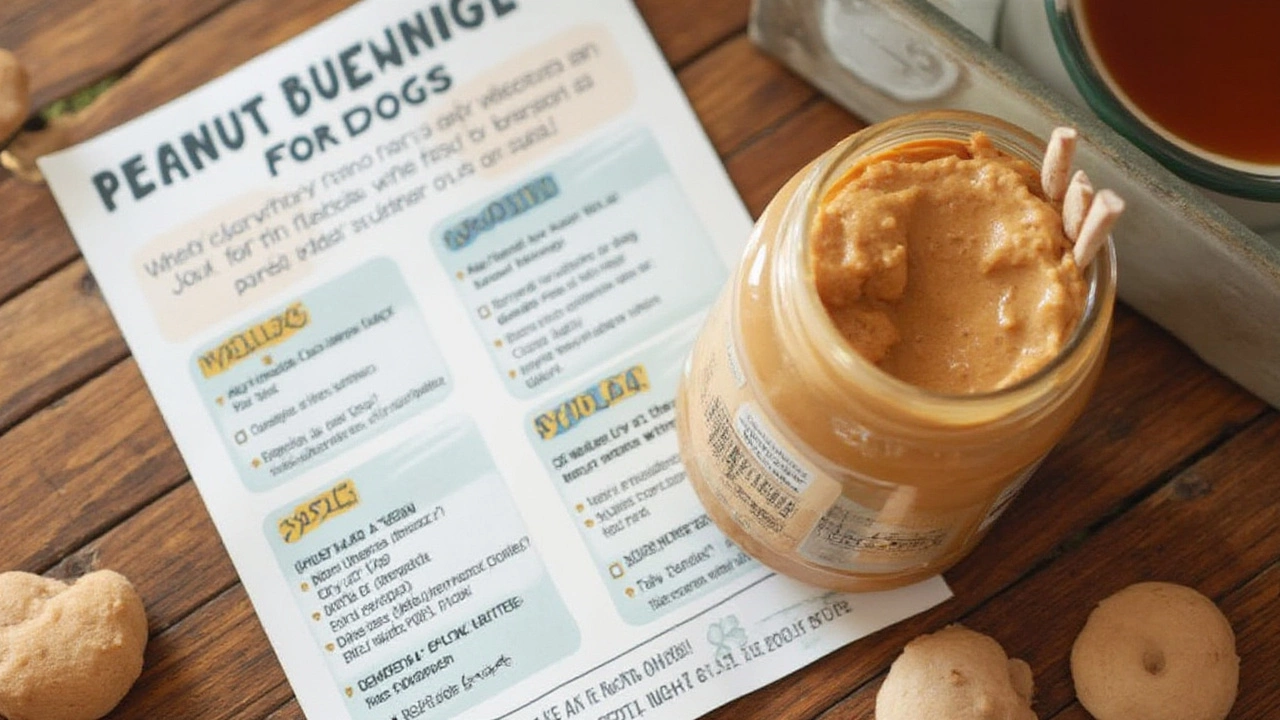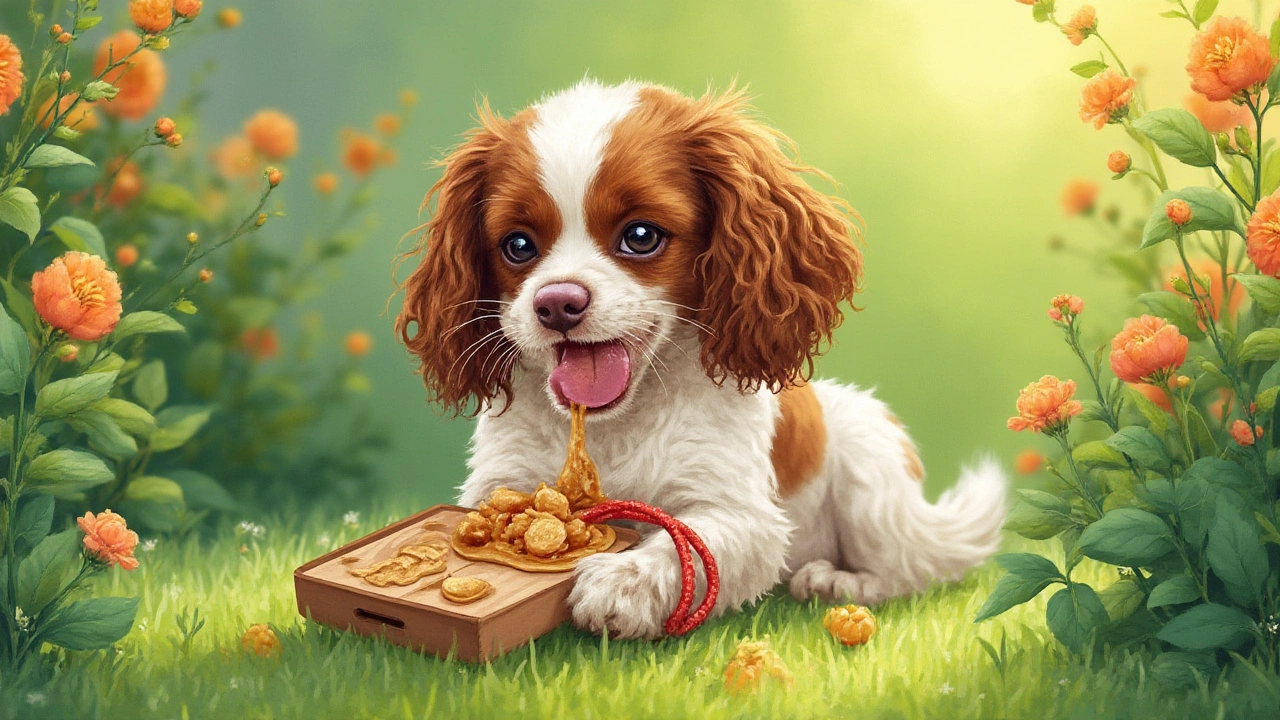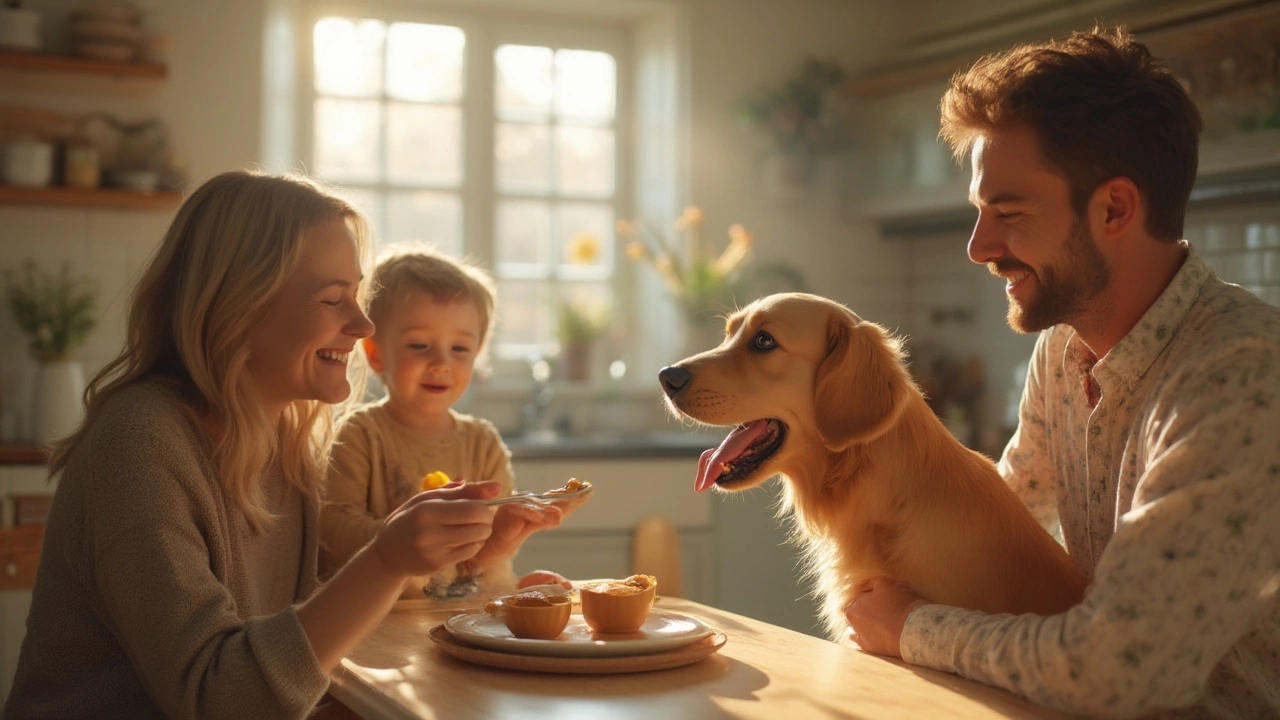Ever tried prying a stubborn pill from your dog's jaws, only to discover that peanut butter is pure magic? You swipe a dollop onto the pill, and suddenly, your canine buddy gobbles it all up. But just because dogs love it doesn't always mean it's safe. So, what's the real deal with peanut butter for dogs — miracle treat, hidden hazard, or just another snack? Let's strip away the confusion and dig into what every dog owner should know.
Why Dogs Love Peanut Butter: The Attraction and Potential Benefits
Picture this: a curious beagle catches a whiff of fresh-roasted peanuts, turns his head, and suddenly blue-eyed puppy energy is focused solely on the lid you're about to twist open. Dogs and peanut butter? It's a tale as old as time. But why are they so hooked? It's all about those irresistible smells and a bold, salty-sweet flavor that dogs just can’t resist. There's something primal and satisfying about the rich, gooey texture for pups. Beyond taste, peanut butter actually brings a few perks to the table.
First up: protein. Sure, it’s not the main course, but a spoonful of unsalted, xylitol-free peanut butter packs a little punch of plant-based protein — perfect for supporting your dog’s lean muscle mass. Second, you’ve got healthy fats. Not all fats are created equal; peanuts deliver a dose of monounsaturated and polyunsaturated fats, which help support coat shine, skin health, and give your dog a satisfying feeling of fullness. Your dog will look and feel just that bit glossier for it.
B vitamins and vitamin E show up in a supporting role, too. They help support immune system health and nerve function, keeping your dog sharp, happy, and ready for park adventures. Magnesium and niacin also tag along, quietly helping with energy and cell repair behind the scenes. Some trainers swear by a teaspoon of peanut butter as the gold standard for high-value training rewards. Let’s face it, there aren’t many treats that keep your dog *that* focused during a loose leash walk.
Sneaky tip: if you want your dog to chill during bath time or nail clipping, smear a thin layer of peanut butter on a lick mat and stick it to the tub or tile wall. Suddenly, the scariest chores become a treat party. In the world of puzzle toys, nothing fills a Kong like peanut butter. Stuff a Kong with a blend of healthy kibble or sweet potato and a dash of peanut butter, and you’ll give your dog 20 minutes of tail-wagging brain work. Just don’t go overboard — the key is moderation.

The Hidden Dangers: Xylitol, Salt, Sugar, and Allergies
All treats come with a catch, and peanut butter is no exception. The most urgent danger? Xylitol, a common artificial sweetener often found in "sugar-free" or "low-carb" peanut butters. In humans, xylitol is a sweetener that replaces sugar, used a lot for diabetics or people avoiding sugar. But in dogs, it's like poison. Even trace amounts can cause a dog’s insulin to spike through the roof and send their blood sugar crashing — which can lead to seizures, liver failure, and, tragically, death. If you remember one thing, make it this: never give your dog peanut butter with xylitol. Always check the label, even if the brand looks familiar.
Salt and sugar might seem less dramatic, but in dog-world, extra salt can mean nasty health problems. Too much sodium makes dogs thirsty and raises blood pressure, eventually chipping away at the kidneys and heart. Sugar, while not toxic in the short-term, sets your dog up for long-term battles with extra weight, dental disease, and diabetes. Stick with natural, unsalted, unsweetened peanut butter — ideally, the kind you churn yourself at the grocery store machine. It shouldn’t be sticky with oil on top, but even natural oil separation? That’s normal. Just stir before serving.
Don’t ignore the risk of allergies, either, though it’s rare. Some dogs, like some humans, can develop a sensitivity to peanuts. Most signs are easy to spot: itching, face swelling, diarrhea, or vomiting after eating peanut butter. If you spot those, that treat needs to disappear from your house. Here’s a fact many miss: even if your dog isn’t allergic to peanuts, store-bought peanut butter holding other ingredients (like chocolate bits, honey, or flavoring) can bring their own risks. Chocolate, no surprise, is straight-up toxic for dogs — and some “fun” flavors hide traces of raisins, macadamia nuts, or other unsafe mix-ins.
Lastly, fat. Even though peanut butter has "good" fats, it’s still calorie-rich. Just a couple of spoonfuls add up — even for big breeds. Too much fat can lead to a painful bout of pancreatitis, which often shows up as vomiting, belly pain, or lethargy. Small breeds and senior dogs are especially at risk. If you're training or sharing treats often, shave calories from regular meals instead of letting peanut butter pile onto daily intake.

Smart Ways to Share Peanut Butter With Your Dog
So, what’s the playbook if you want to keep peanut butter as a safe, happy part of your dog’s treat life? Start simple: always use a small amount. For a typical medium-sized dog (think lab or beagle), one or two teaspoons a couple of times a week is plenty. Toy breeds need even less — think half a teaspoon. Use the treat for special moments, not for daily munching.
Don’t just check the xylitol question at the aisle. Even when you’re out at cafes or dog bakeries, ask if treats are sweetened, and never assume anything labeled “reduced sugar” or “no sugar added” means it’s xylitol-free. A quick scan of the ingredients list is a lifesaver. Homemade is always best — you can blend roasted, unsalted peanuts into butter in ten minutes flat, and you’ll know for sure what’s inside. Freeze it in dollops for easy training treats, or mix it lightly into home-cooked meals for a savory twist.
Ready for a pro tip? Mix mashed banana or pumpkin into peanut butter to spread the flavor without packing in extra calories. Both banana and pumpkin are dog-safe (just check you’re using 100% pumpkin, not pie filling). Another trick — freeze peanut butter in ice cube trays with tiny pieces of apple or carrot for the ultimate summertime cool-down. It’s a perfect way to keep energetic dogs busy during those July heat waves when a romp outside turns into a sweat fest.
Monitor your dog after new treats, especially the first time. Watch for gagging, coughing, or pawing at the face. Thick, sticky peanut butter can sometimes get stuck on the roof of your dog’s mouth. If you see this, try a thinner style or dilute it with warm water.
Avoid the classic "spoon feeding" method if your dog is a gulper. Work peanut butter into toys, lick mats, or even frozen cubes to keep them from inhaling big gobs at once. Worried about calories? Swap a part of your regular treat ration for peanut butter, not in addition to. And always match up to your own dog's unique health needs. Senior dogs or those with kidney problems? Run any treat ideas by your vet. And if your dog’s a master counter-surfer, stash jars high and away. Some dogs are so peanut butter obsessed they’ll chew through lids or leap for the snack shelf in seconds.
One more heads up: not all dogs are fans. A few might turn up their noses, which is perfectly fine. Chasing one trendy treat isn’t worth the stress. And remember, the real delight of peanut butter is about making memories: a goofy tongue after a Kong session, the quizzical head tilt during pill time, or that simple happiness as your pup camps out by your side, savoring every last lick.

